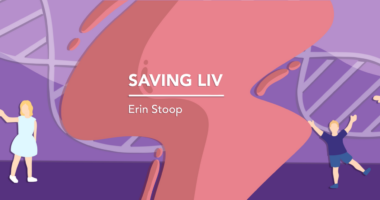Sleep Hygiene for Sanfilippo Syndrome Patients

Children with Sanfilippo syndrome frequently have trouble sleeping. To help them rest better, be more alert and potentially reduce daytime behavioral issues, you may want to practice sleep hygiene techniques with your child.
Sanfilippo syndrome and sleep disturbances
A survey of 141 parents and caregivers of children with Sanfilippo syndrome found that 91.5% of children had some form of sleep disturbance. Commonly reported disturbances included trouble falling asleep, waking up frequently during the night, waking early, and sleeping during the day. Caregivers also indicated that sleep disturbances were linked to daytime sleepiness and aggressive behaviors.
What is sleep hygiene?
Sleep hygiene is the use of habits and modifications to one’s environment to aid in falling asleep and staying asleep. Practicing good sleep hygiene can help your child rest better and be more alert the next day.
Sleep hygiene tips
Medications and supplements such as antihistamines and melatonin (sometimes called the “sleep hormone”) may help with sleep disturbances. But there also are behavioral techniques and environmental alterations that you can use to improve your child’s sleep.
Daytime routine
Daytime activities can have a large impact on your child’s ability to sleep. You should make sure your child is exposed to adequate sunshine during the day, as the light can help adjust circadian rhythms (the normal cycle of waking and sleeping).
Exercise also can help make it easier for your child to sleep at night; it helps to burn excess energy and also improves general health.
Depending on your child’s age, have them take naps earlier in the day limit their duration.
Try not to let your child have caffeinated or sugary food and beverages such as soft drinks or chocolate in the evening as these may impair their ability to fall asleep. You also should avoid giving your child large, heavy, or spicy meals in the evening because they may make it more difficult for them to sleep comfortably.
Bedtime routine
Setting a consistent and relaxing routine before bed can help reduce sleep disturbances. Try to put your child to bed around the same time each evening.
Bright lights in the evening can interfere with melatonin production, causing disturbances to the circadian rhythm. Electronics can increase mental stimulation. The blue light that they emit can interfere with melatonin production. So, you should discontinue their use 30 to 60 minutes before bedtime.
Relaxing activities such as soft music, reading, or bathing also may help your child wind down for bedtime.
Bedroom modifications
Adjusting the environment in your child’s bedroom can help decrease sleep disturbances. Make sure the room is as dark and quiet as possible. If it is too difficult to eliminate outside sounds, you may consider using a white noise machine, soft music, or a fan.
Removing distractions such as toys from the bedroom also should help your child to focus on going to sleep. Light scents, such as lavender, also help some children relax.
Last updated: Jan. 5, 2021
***
Sanfilippo Syndrome News is strictly a news and information website about the disease. It does not provide medical advice, diagnosis, or treatment. This content is not intended to be a substitute for professional medical advice, diagnosis, or treatment. Always seek the advice of your physician or other qualified health provider with any questions you may have regarding a medical condition. Never disregard professional medical advice or delay in seeking it because of something you have read on this website.






